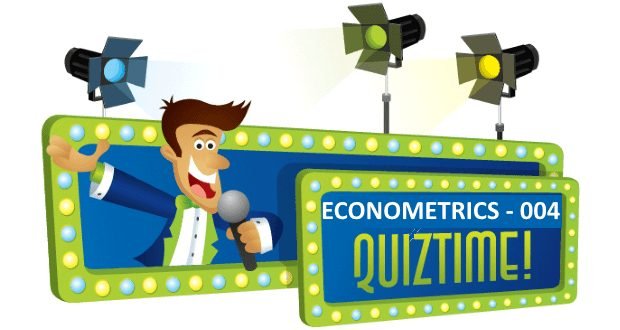500 câu trắc nghiệm Kinh tế lượng – 7A

MULTIPLE CHOICE. Choose the one alternative that best completes the statement or answers the question.
Determine whether the hypothesis test involves a sampling distribution of means that is a normal distribution, Student t distribution, or neither.
14) Claim \(\mu \) = 977. Sample data: n = 25, \({\bar x}\) = 984, s = 25. The sample data appear to come from a normal distributed population with \(\sigma \) = 28.
○ Student t
○ Neither
● Normal
SHORT ANSWER. Write the word or phrase that best completes each statement or answers the question.
Assume that a simple random sample has been selected from a normally distributed population. Find the test statistics, p-value, critical value(s), and state the final conclusion.
15) Test the claim that for the adult population of one town, the mean annual salary is given by \(\mu \) = $30,000. Sample data are summarized as n = 17, \({\bar x}\) = $22,298, and s = $14,000. Use a significane level of \(\alpha \) = 0.05
\(\alpha \) = 0.05, Test statistics, t = -2.236, 0.02 < p-value < 0.05. Critical value, t = ±2.120. Because the test statistics is in the critical region and the p-value is less than alpha level, we reject the null hypothesis. There is sufficent evidence to warrant rejection of the claim that \(\mu \) = $30,000 Test the given claim using the traditional method of hypothesis testing. Assume that the sample has been randomly selected from a population with a normal distribution. 16) A researcher wants to check the claim that convicted burglars spend an average of 18.7 months in jail. She takes a random sample of 11 such cases from court files and finds that \({\bar x}\) = 20.5 months and s = 7.9 months. Test the null hypothesis that \(\mu \) = 18.7 at the 0.05 significane level. Test statistics: t = 0.756. Critical values: t = ±2.228. Fail to reject H0. There is not sufficent evidence to warrant rejection of the claim that the mean is 18.7 months. 17) A light – bulb manufacturer advertises that the average life for its light bulbs 900 hours. A random sample of 15 of its light bulbs resulted in the following lives in hours. 995 590 510 539 739 917 571 555 916 728 664 693 708 887 849 At the 10% significane level, do the data provide evidence that the mean life for the company’s light bulds differs the the advertised mean? Test statistics: t = -4.342. Critical values: t = ±1.761. Reject H0: \(\mu \) = 900 hours. The sample data support the claim that the true mean life differs from the advertised mean. MULTIPLE CHOICE. Choose the one alternative that best completes the statement or answers the question. Find the critical value or values of \({\chi ^2}\) based on the given information. 18) H1: \(\sigma \) > 26.1, n = 9, \(\alpha \) = 0.01
● 20.091
○ 21.666
○ 1.646
○ 2.088
SHORT ANSWER. Write the word or phrase that best completes each statement or answers the question.
Use the traditional method to test the given hypothesis. Assume that the population is normally distributed and that the sample has been randomly selected.
19) In one town, monthly incomes for men with college degrees are found to have a standard deviation of $650. Use a 0.01 significane level to test the claim that for men without college degrees in that town, incomes have a higher standard deviation. A random sample of 22 men without college degrees resulted in incomes with a standard deviation of $939.
Test statistics: \(\chi _{n – 1}^2 = \frac{{(n – 1){s^2}}}{{{\sigma ^2}}}\) = 10.063; Critical value: \({\chi ^2}\) = 8.932. Reject H0. The sample data support the claim that incomes of men without college degrees have a standard deviation greater than $650.
20) With individual lines at the checkouts, a store manager finds that the standard deviation for the waiting times on Monday mornings is 5.2 minutes. After switching to a single waiting line, he finds that a random sample of 29 customers, the waiting times have a standard deviation of 5.6 minutes. Use a 0.025 significane level to test the claim that with a single line, waiting times vary less than individual lines.
Test statistics: \(\chi _{n – 1}^2 = \frac{{(n – 1){s^2}}}{{{\sigma ^2}}}\) = 32.473. Critical value: \({\chi ^2}\) = 15.308. Reject H0. There is sufficent sample evidence to support the claim that with a single line, waiting times have a smaller standard deviation than individual lines.